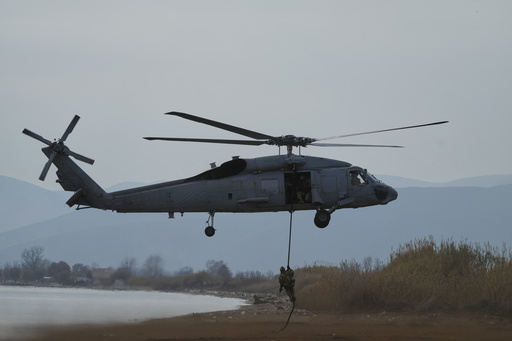
NEA ANCHIALOS, Greece — NATO is currently evaluating its capacity for rapid military deployment across Eastern Europe, independent of direct support from the United States, as the U.S. recalibrates its defense strategy concerning Europe and the ongoing conflict in Ukraine.
The six-week Steadfast Dart 2025 exercises, taking place in Bulgaria, Romania, and Greece, coincide with the nearing three-year anniversary of Russia’s invasion of Ukraine. Approximately 10,000 soldiers from nine different countries are participating, making it the most significant NATO operation planned for the year.
The absence of U.S. forces during these exercises comes amid European nations’ drive for greater military independence, fueled by concerns regarding the previous U.S. administration’s commitment to collective defense and calls for increased military expenditure by European allies.
In a recent statement, U.S. officials emphasized the need for European nations to significantly boost their defense budgets and take on a larger burden of financial support for Ukraine. This shift in strategy aligns with President Donald Trump’s intentions to engage in direct negotiations with Russia.
On Thursday, a military demonstration involving Greek and Spanish marines showcased an amphibious assault near the central Greek city of Volos, marking the first full-scale deployment of NATO’s newly established Allied Reaction Force (ARF). This force, created in July of last year, is designed to be rapidly deployed within ten days and integrates conventional military units with cyber and space capabilities.
“This is what we’ve been training for,” stated Italian Lt. Gen. Lorenzo D’Addario, the commander of the ARF, after observing a 90-minute demonstration. He elaborated that NATO aims to establish a force that is ready and adaptable, capable of operating across multiple domains—air, sea, land, as well as cyber and space. This capability is crucial not only for responding to the needs of the alliance but also for deterring potential conflicts.
Western military officials, anticipating ongoing tensions with Russia and President Vladimir Putin, recognize the growing importance of NATO’s new capabilities to strengthen its eastern flank. “As we are nearing the anniversary of Russia’s severe invasion of Ukraine, we now see a revitalized and focused NATO,” observed Canadian Lt. Gen. Peter Scott, the deputy commander of NATO’s Joint Force Command based in Naples, Italy, who was present at the exercise.
He characterized the operation as a noteworthy milestone in the modernization and enhancement of NATO’s readiness to protect every inch of allied territory. Preparations for Steadfast Dart began two years ago, involving collaboration with planners from countries not partaking in the drills, including the United States.
The current exercises include forces from nine NATO member nations: Bulgaria, France, Greece, Italy, Romania, Slovenia, Spain, Turkey, and the United Kingdom. The operation, spearheaded by the U.K. with 2,600 military personnel and 730 vehicles, features 17 naval vessels, over 20 aircraft, and more than 1,500 military vehicles. The drills, concluding on February 26, focus on rapid deployment missions and multi-domain operations, thereby illustrating NATO’s evolving military stance along its eastern borders.
Despite the scale of the exercises, earlier in the week, groups backed by communist organizations organized small protests nearby the training venue in central Greece, expressing opposition to the country’s involvement in foreign deployments.

